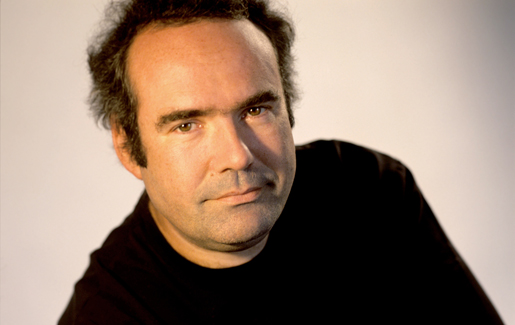Quality high yet surprises few at Phil’s “Contact” program

Marc-André Dalbavie’s Trio No. 1 was performed at the New York Philharmonic’s “Contact!” program Monday night at Subculture.
The New York Philharmonic’s contemporary music series, CONTACT!, is now in its fifth year and has become something of a puzzle. This season, the scope has both contracted — moving from two performances of each program in mid-sized halls at the Metropolitan Museum and Symphony Space to the cozy new SubCulture in Greenwich Village — and expanded, from two to three programs. Is that ambition or consolidation?
Though the Philharmonic has commissioned over a dozen new works through the series, the presiding style of the music has shown that there is a vast aesthetic gap between new (recent) music and the set of values and concepts generally called “new music.” If the new music is an accepted style, how “new” can it be?
Composer Marc Neikrug introduced the works: his own Passions, Reflected for solo piano (finished in 2008 but heard in its world premiere), the U.S. public premiere of Poul Ruders’ String Quartet No. 4, and Marc-André Dalbavie’s Trio No. 1 for violin, cello and piano, also from 2008. The musical star of the program was the excellent pianist Yefim Bronfman.
Neikrug talked briefly about his composition in terms of Robert Schumann, whose linked character pieces he emulates in Passions, Reflected. In twelve short parts, the music builds from an aphoristic descending bass line, through the accumulation of harmonic and rhythmic complexity, to the twelfth section, a spectacular response to The Rite of Spring.
Typical for a CONTACT! program, this is a well-made composition; the music moves from simplicity to complexity with clarity and logic, the style balances consonance and dissonance, and the expression is on the harder edge of Neo-romanticism. Bronfman played it with the type of command and energy that every composer dreams of, but the sound is familiar, expected. This is music that could have been written anytime in the past 100 years.
Ruders’ String Quartet had a similar effect. The five movements are skillful and intelligent. The piece opens with the quartet playing in quarter tones, and ends with strikingly evocative, chiming harmonics. In between, there is a ghostly Adagio and two fast movements that have plenty of moment-to-moment structural surprises, the music slamming to a stop then suddenly restarting, with entirely different phrases and rhythms.
The piece was played with strength and confidence by four Philharmonic musicians: violinists Fiona Simon and Sharon Yamada, violist Robert Rinehart and cellist Eileen Moon. Neikrug warned the audience that Ruders’ music is ‘intense,’ but the results fall well within the bounds of decorum, and are nothing like the abrading mysteries of a string quartet from, say, Horatiu Radalescu.
There is a narrative goal to both Passions, Reflected and Ruders’ quartet that reaches back to the nineteenth century, and that musical modernism was supposed to have erased. No matter how contemporary the grammar and vocabulary of pitch and attack, these pieces tell a story, and so are, like Schoenberg, a logical outgrowth of Brahms. Their newness is relative and limited.
In contrast with those works, Dalbavie’s Trio is genuinely “new music,” and the best piece on the program. The writing and playing — Bronfman, violinist Quan Ge and cellist Maria Kitsopoulos — revealed an excellent composition.
Dalbavie organizes the music with an almost avant-garde rigor: the entire twenty minutes are based around a nine-note scale. At first, the notes are broken up into a sequence of ringing attacks, then the instruments play the scale going up, then down. There are also chords derived from the scale that the musicians pass around. The tempo is consistent, but the rhythms move from slow to fast to slow, or juxtapose dense activity in the strings with sparse piano accompaniment and vice-versa.
With such simple means, there is no story to tell except for the one of how the notes fit together. The antecedents are the rising celesta line from the first movement of Shostakovich’s Symphony No. 5 and the descending scales of Arvo Pärt’s Cantus in Memoriam Benjamin Britten, placing the Trio in a recent context. The lack of narrative — even with a discernible coda — and the clarity of the composing make the piece bracing and refreshing.
So where is CONTACT! now? In a city packed with new music — New Amsterdam Presents, Indexical, Miller Theatre, et al — it is an appendage of the New York Philharmonic as a whole: good, strong music in the ongoing classical tradition, but few surprises.
The final CONTACT! concert of this season is 7:30 p.m., June 3, at SubCulture. Yefim Bronfman plays with musicians from the New York Philharmonic at 3 p.m., March 30, at 92Y. nyphil.org; 92Y.org


